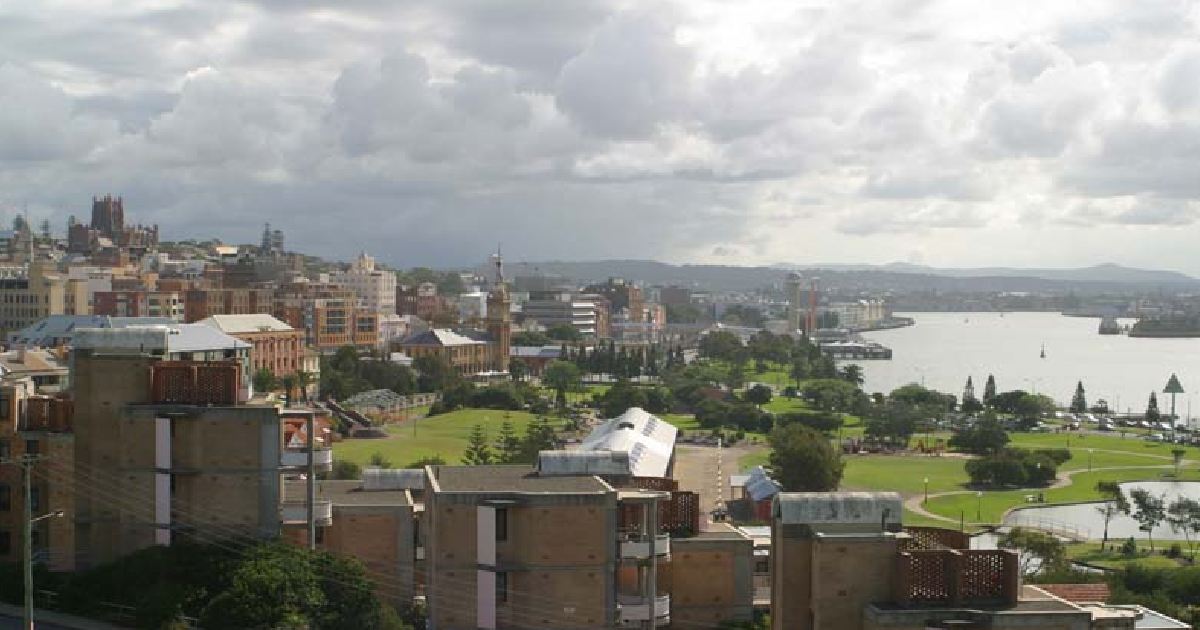Australia’s diverse and expansive landscape is home to several significant urban areas, each boasting unique characteristics and contributing to the nation’s cultural and economic vibrancy. The largest cities in Australia by population are not only territory capital cities and industry but also represent distinct urban centers with rich histories and dynamic communities. In this article, we delve into the top ten most populous cities in Australia, highlighting capital city forms, their population, are, and key features.
10. Central Coast

- Population: 0.335 million
- Area: 1,854 square kilometers
- Key Features: Pristine beaches, national parks, commuter-friendly
The Central Coast, located in New South Wales, has a population of 0.335 million and spans an area of 1,854 square kilometers. Known for its pristine beaches, national parks, and relaxed lifestyle, the Central Coast is a popular destination for both tourists and residents. This region represents significant towns and urban centers in New South Wales.
Central Coast citizens are growing because of its accessibility to Sydney, rendering it appealing to commuters. Local authority portions of the area encompass a combination of rural and coastal settings, incorporating its attractive uniqueness. The Central Coast of New South Wales continues to succeed as an exceptional urban center and ranks among the top fifty largest cities in Australia.
9. Sunshine Coast

- Population: 0.347 million
- Area: 3,127 square kilometers
- Key Features: Beaches, national parks, relaxed lifestyle
The 3,127-square-kilometer Sunshine Coast in Queensland is inhabited by 0.347 million inhabitants. Tourists and foreigners love this region’s sandy beaches, national parks, as well as laid-back life. The Sunshine Coast’s urban center brings together the ocean and farther afield towns.
The Sunshine Coast is an exclusive hotspot for seniors and households seeking a more relaxed way of life, increasing its population. Coastal and agricultural regions are protected by municipal governments. Focused mostly on environmentally friendly growth, the Sunshine Coast is becoming one of Queensland’s largest urban areas.
8. Newcastle-Maitland

- Population: 0.450 million
- Area: 2,000 square kilometers
- Key Features: Historic coal industry, beaches, thriving arts scene
The 2,000-square-kilometer Newcastle-Maitland metropolitan region in New South Wales has 0.450 million people. Beautiful waterways, a vibrant cultural atmosphere, and an ancient tradition of coal mining render this area infamous. Newcastle–Maitland ranks as one of the state’s largest cities and it lives on to prosper as an artistic and commercial hub.
The resident population growth in Newcastle-Maitland is supported by its appeal as a coastal city with a rich history and vibrant community life. The area’s local government areas cover a mix of urban and rural settings, contributing to its diverse character. Newcastle-Maitland represents significant towns in New South Wales, with a strong focus on regional development.
7. Canberra

- Population: 0.457 million
- Area: 814 square kilometers
- Key Features: Government institutions, planned urban design, educational centers
Australia’s capital, Canberra, a 0.457 million residents and 814 square kilometers. Canberra is celebrated for its art galleries, federal buildings, and planned infrastructure. It is the social center of the country. Australia’s National Museum and Parliament House predominate in the city’s central district region.
Canberra’s resident population growth is relatively stable, driven by its role as a territory capital city and a center for education and research. The city’s urban planning is unique, with distinct suburban local government areas that are carefully integrated into the natural landscape. Canberra’s strategic importance as a territory capital city ensures its continued significance in Australia’s urban hierarchy.
6. Gold Coast-Tweed Heads

- Population: 0.699 million
- Area: 1,334 square kilometers
- Key Features: Surf beaches, theme parks, vibrant nightlife
Gold Coast-Tweed Heads population size is 0.699 million and occupies 1,334 hectares. Its surf waves, tourist landscapes, and busy dining make the Queensland-New South Wales frontier region famous. The Gold Coast is a famous community with an established business in tourism, placed among Australia’s fifty largest urban centres.
Residence expansion is prompted by seniors, youthful couples, and foreigners who flock to this popular luxury paradise. The beach suburbs and skyscrapers define the Gold Coast’s global center. Leisure and cultural stimulation drive the area’s economy.
5. Adelaide

- Population: 1.336 million
- Area: 3,257 square kilometers
- Key Features: Festivals, wine regions, cultural institutions
Adelaide, the capital of South Australia, has about 1.336 million inhabitants and 3,257 acres of land. Adelaide encompasses history and modernity with its occasions, vineyard areas, and cultural entities. Central local government region includes several of Australia’s most important historical sites.
Adelaide’s social standing as an accessible town with an easier way of life encourages a demographic increase. A diversified populace is served by carefully designed suburban local government areas all over the city. Adelaide, the territorial capital, plays a role in South Australia’s society and economy.
4. Perth

- Population: 2.042 million
- Area: 6,417 square kilometers
- Key Features: Stunning beaches, thriving arts scene, strategic location
Perth, the capital of Western Australia is the fourth-largest city with 2.042 million residents. Perth boasts stunning coastlines, huge gardens, and an excellent arts scene throughout 6,417 kilometers of land. Perth, the only west coast state capital, is an entry point to Asia and a regional commercial engine.
Each of Perth’s local government districts—which comprise a variety of central and rural areas—contributes to the fluid rise of the city. Residents and travelers are drawn to the city’s exceptional urban center’s scenic splendor and cutting-edge facilities. Its central location and growing population provide Perth with a vital Australian city.
3. Brisbane

- Population: 2.406 million
- Area: 15,842 square kilometers
- Key Features: Subtropical climate, mix of modern and historic buildings, growing economy
The third-largest city in Australia is Brisbane, the state capital of Queensland, which has 2.406 million citizens. Modern skyscrapers and historical structures cover 15,842 acres of the city. Its warm atmosphere, casual way of life, and fast-growing economy render Brisbane an influential Australian city.
The metropolitan government areas of Brisbane, among the largest cities in the nation, cover a diverse and extensive area. Many young adults and couples seeking a healthy balance between work and leisure have migrated to the city. Queensland’s main city reinforces the city of Brisbane’s status as Australia’s largest urban city.
2. Sydney

- Population: 4.926 million
- Area: 12,367 square kilometers
- Key Features: Iconic landmarks, diverse population, vibrant nightlife
New South Wales’ capital, Sydney, is the nation’s second-biggest city with 4.926 million citizens. Boasting an overall area of 12,367 hectares, Sydney is an established town widely recognized for its iconic sites, such as the famous Harbour Bridge and the Opera House of Sydney. The Australian economy and culture rely upon Sydney, the capital of the government locale.
Sydney has one of the most varied city dwellers. The historic town center has beautiful shores, active parties, and a vibrant history. New South Wales’ largest city downtown, Sydney, is an essential catalyst in the growth of the county due to its rapid population expansion.
1. Melbourne

- Population: 4.968 million
- Area: 9,992 square kilometers
- Key Features: Arts scene, culinary diversity, historic architecture
Melbourne, the capital city of Victoria, is Australia’s largest city by population, with 4.968 million residents. This bustling metropolis spans an area of 9,992 square kilometers, making it one of the most sprawling cities in the world. Known for its vibrant arts scene, diverse culinary offerings, and historic architecture, Melbourne is a central local government area that truly represents significant towns and urban centers within Australia.
Melbourne’s resident population growth has been steady, largely due to its high quality of life and robust job market. The city’s unique blend of historic charm and modern innovation makes it a magnet for both tourists and new residents. As the only state capital city with such a diverse cultural footprint, Melbourne continues to set the benchmark for urban development in Australia.
Conclusion
Australia’s largest cities by population are a testament to the country’s diverse and dynamic urban landscape. From the bustling metropolis of Melbourne to the relaxed beaches of the Sunshine Coast, each of these represents significant towns and offers a unique blend of culture, lifestyle, and economic opportunities. As the nation continues to grow, these cities will remain at the forefront of Australia’s development, representing significant urban areas that shape the future of the country.
Frequently Asked Questions (FAQs)
What is the most crowded city in Australia?
Melbourne is the most crowded city in Australia, with a population of 4.968 million. It surpasses Sydney slightly, making it the largest city by population. Melbourne’s central local government area is a significant urban center, known for its vibrant arts scene, diverse culture, and steady resident population growth.
Is Perth bigger than Sydney?
In terms of population, Perth is not bigger than Sydney. Sydney is Australia’s second-largest city, with 4.926 million residents, while Perth has 2.042 million. However, Perth covers a significant area of 6,417 square kilometers, making it a sprawling urban center, but Sydney remains larger in both population and urban influence.
Which is the most developed city in Australia?
Sydney is often considered the most developed city in Australia due to its status as a global financial hub, central local government areas, and iconic infrastructure. As a central local government area, it plays a crucial role in both the national and international arenas, making it a key urban center for commerce, culture, and innovation.
What is the most comfortable city in Australia?
Melbourne is frequently regarded as the most comfortable city in Australia, known for its high quality of life, vibrant culture, and well-planned urban areas. The city’s distinct urban centre offers a perfect blend of historic charm and modern amenities, making it a desirable place to live for residents and newcomers alike.
What is the fastest-growing city in Australia?
Brisbane is currently the fastest-growing city in Australia, with rapid resident population growth driven by its appealing lifestyle, subtropical climate, and expanding economy. The city’s suburban local government areas cover a vast and diverse region, attracting young professionals and families seeking a balanced and vibrant living environment.

